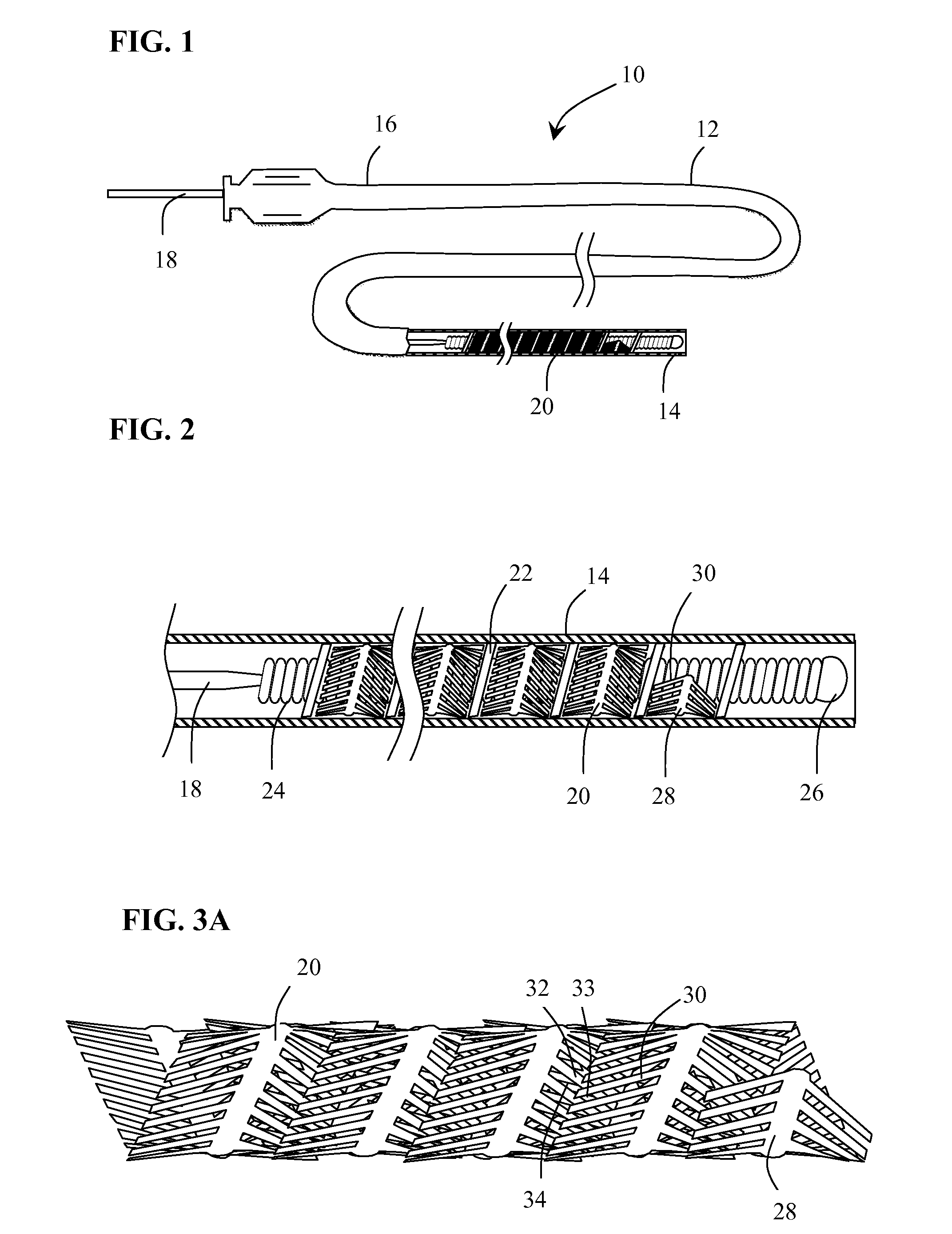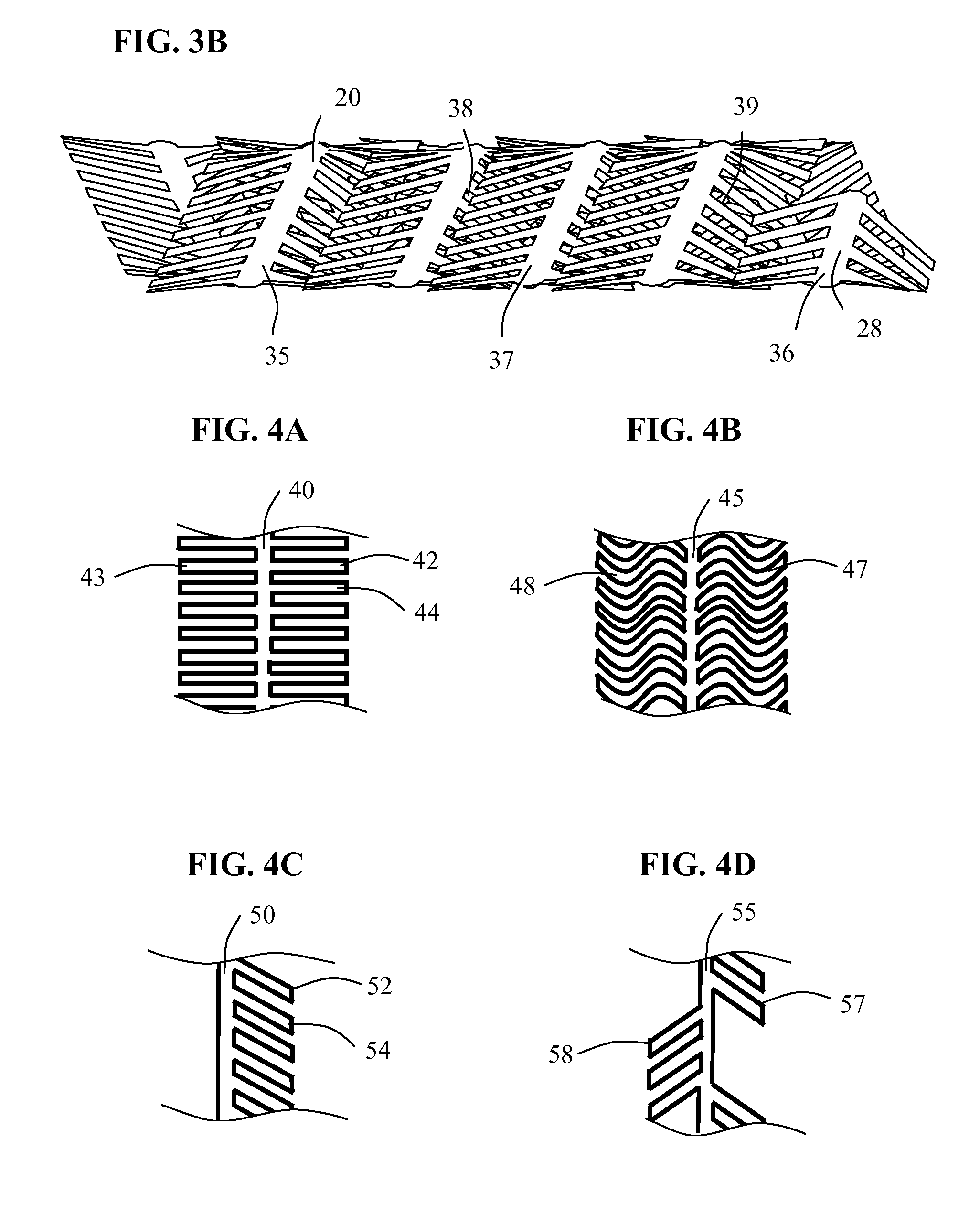Methods and systems for performing vascular reconstruction
a technology of vascular reconstruction and methods, applied in the field of methods and systems for performing intralumenal procedures, can solve problems such as hemorrhagic stroke, long-term recanalization of aneurysms, and neurological deficits symptomatic and neurological deficits
- Summary
- Abstract
- Description
- Claims
- Application Information
AI Technical Summary
Benefits of technology
Problems solved by technology
Method used
Image
Examples
Embodiment Construction
[0041]Methods and systems for performing vascular reconstruction and revascularization in a desired area of the body are herein described. FIG. 1 illustrates a medical device deployment system 10 suitable for use with embodiments of the present invention. System 10 includes a catheter 12 having distal and proximal ends 14 and 16 respectively, an elongate delivery member 18, and a stent device 20 for use in vascular reconstruction or revascularization procedures.
[0042]FIG. 2 depicts a magnified partial cross-sectional view of catheter distal end 14. Slidably positioned within the lumen of catheter 12 is delivery member 18. Delivery member 18 is preferably formed as an elongate wire assembly and includes at its distal end a raised spiral retainer member 22 secured to a flexible coil 24. Located at the distal end of coil 24 is an atraumatic tip 26. As shown, atraumatic tip 26 may be formed as a rounded bead using beading processes known for guide wire manufacturing such as soldering, p...
PUM
 Login to View More
Login to View More Abstract
Description
Claims
Application Information
 Login to View More
Login to View More - R&D
- Intellectual Property
- Life Sciences
- Materials
- Tech Scout
- Unparalleled Data Quality
- Higher Quality Content
- 60% Fewer Hallucinations
Browse by: Latest US Patents, China's latest patents, Technical Efficacy Thesaurus, Application Domain, Technology Topic, Popular Technical Reports.
© 2025 PatSnap. All rights reserved.Legal|Privacy policy|Modern Slavery Act Transparency Statement|Sitemap|About US| Contact US: help@patsnap.com



